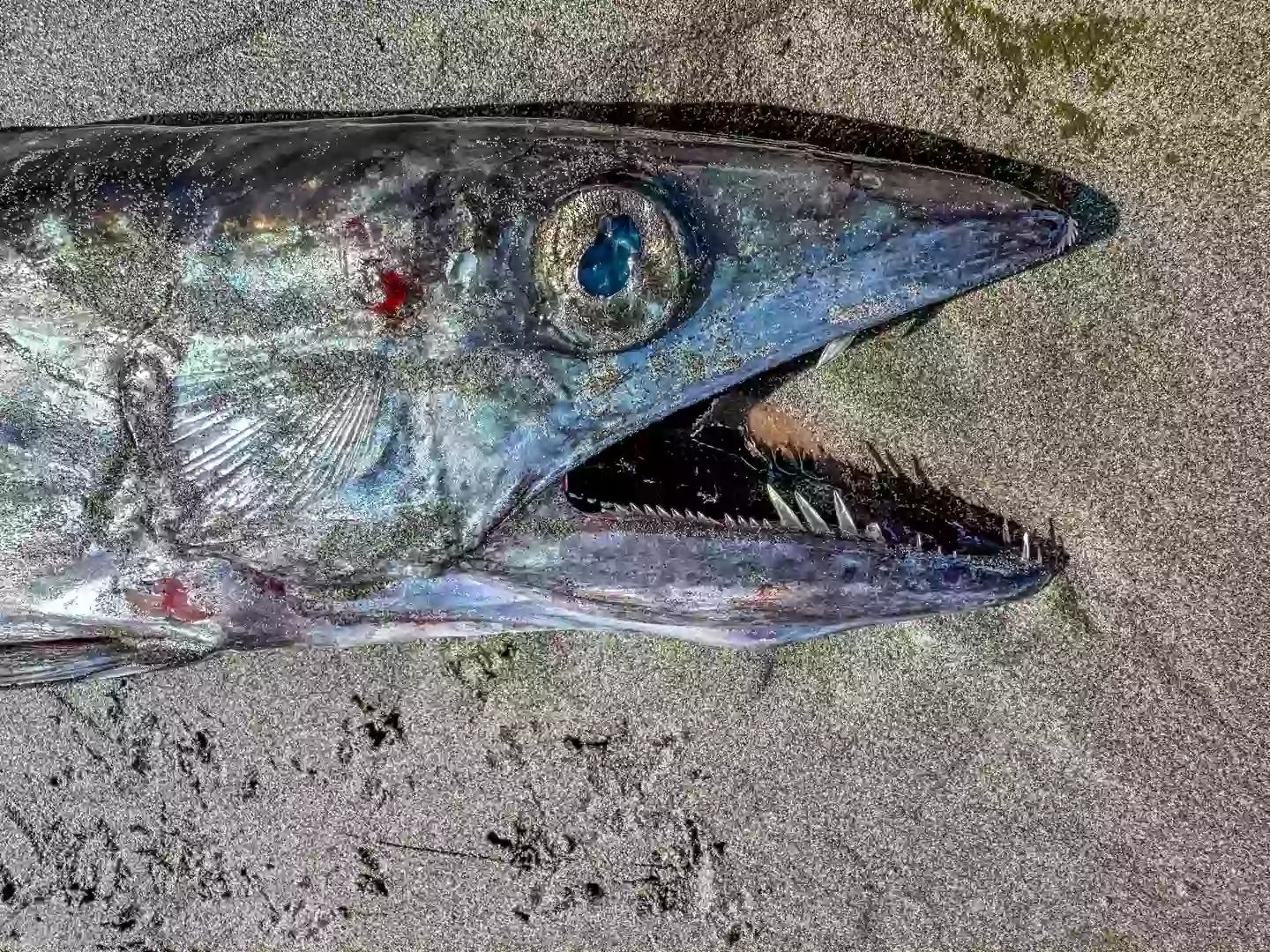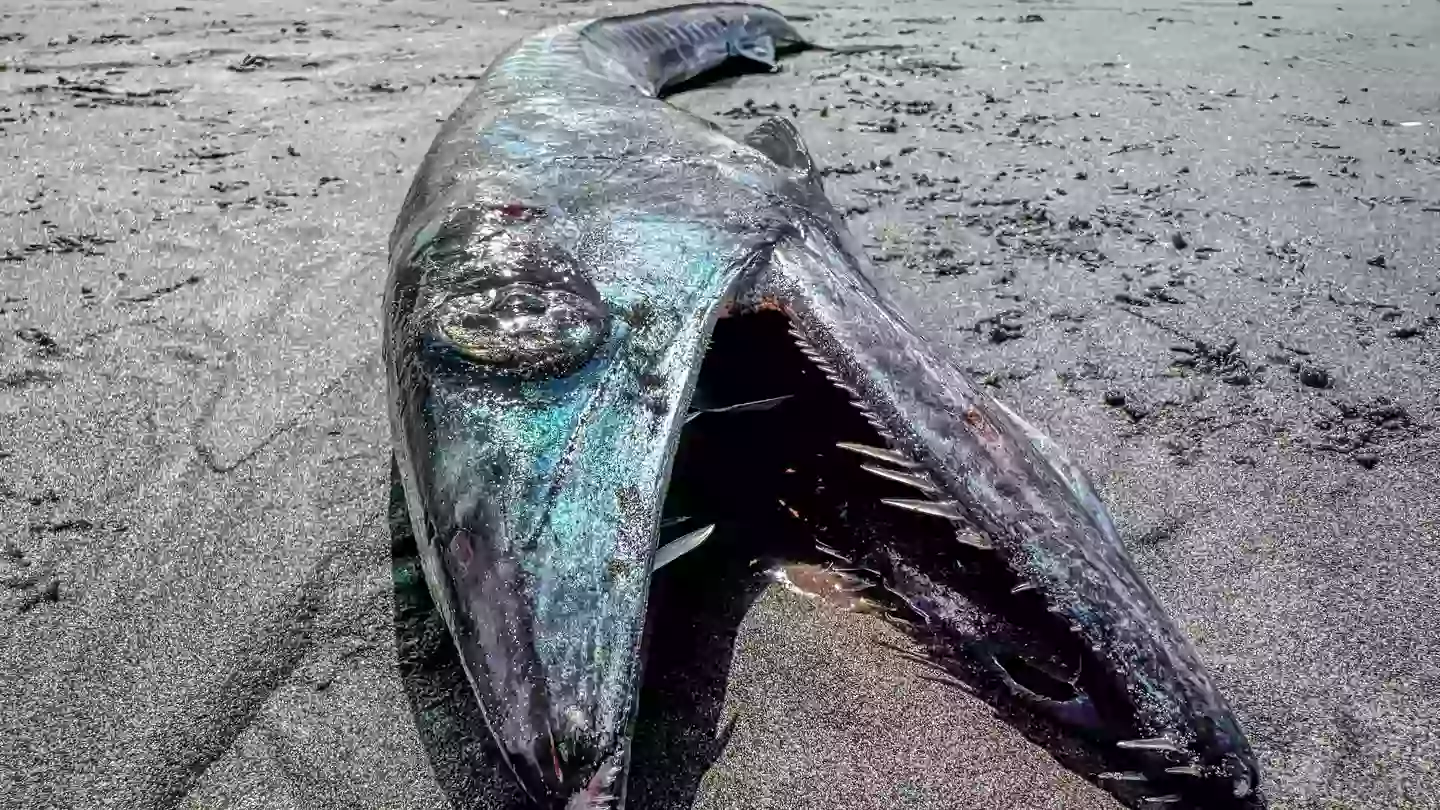It’s a rare occurrence when a fearsome creature from the ocean’s depths appears on the shore.
This is exactly what happened, according to the Seaside Aquarium’s ‘fish nerds,’ when an unusual deep-sea fish washed up on the Oregon coast.
As reported by USA Today, the aquarium team recognized the fish, known for its long mouth and razor-sharp fangs, although such sightings are uncommon along the Oregon shoreline.
An aquarium visitor entered their gift shop with a photo of the massive carcass, seeking the staff’s expertise in identifying the creature he had discovered.
Tiffany Boothe, assistant manager at the Seaside Aquarium, told the news outlet: “When he showed us the picture, it was such a fresh, great specimen that we were like, ‘Sweet, we’re gonna go pick it up’.”

“We get about a half dozen in our area a year,” she added. “It doesn’t look like a very friendly fish. If I saw that fish alive, I wouldn’t touch it.”
The five-foot-long creature was identified as a longnose lancetfish, which generally inhabits waters over a mile deep.
They are known to prefer warmer waters but occasionally migrate as far north as the Bering Sea, according to the National Oceanographic and Atmospheric Administration.
Boothe noted that the lancetfish has ‘gelatinous flesh that the seagulls just absolutely go crazy after,’ and mentioned how hard it is to ‘find ones that are fresh and that intact’ like this one.
Adding to the intrigue, the lancetfish has a ‘really, really slow’ digestive system, so examining its stomach can reveal recent meals, ranging from whole fish to squids.
The Seaside Aquarium quickly examined the fish once it was retrieved from the sand and shared the findings on social media.
In its stomach, they discovered remains of several squid and octopuses, along with at least three whole fish.

On Facebook, the team wrote: “Resembling a barracuda, this is one fish you would not expect to run across along the Oregon coast.
“Their beautiful large eyes, sharp fang-like teeth, and serpent-like body distinguishes this fish from most others living in the Pacific Northwest. Little is known about the longnose lancetfish.
“We know they range from the southern Bering Sea to Chile and occupy surface waters down to 6,000 feet.”
Investigating their diet, the aquarium team highlighted that these fish are not ‘picky eaters,’ consuming over 90 species of marine life, including, alarmingly, each other, and regrettably, oceanic pollution like plastic.
“By studying what the longnose lancetfish is eating scientists can better understand how the marine food web changes over time (if at all),” they continued. “It may also help understand changes in the food web brought on by events like El Nino or La Nina.”
According to NOAA, these fish are referred to as ‘Twilight Zone’ fish because of the extreme depths they hunt in. They can reach lengths of up to seven feet and weigh around 20 pounds.
Their scientific genus name, Alepisaurus, translates to ‘scaleless lizard,’ giving them a ‘dinosaur-worthy’ title.

